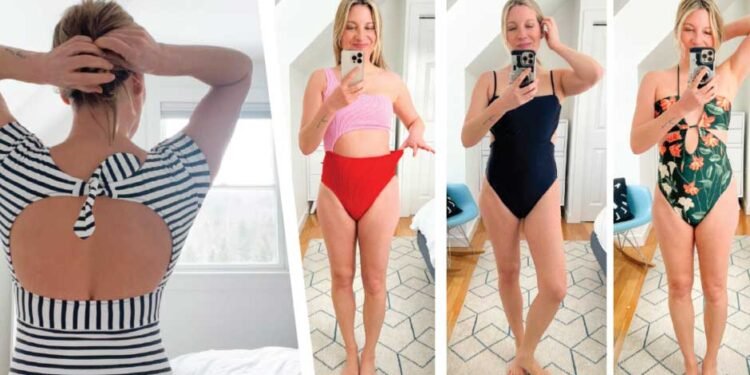For some, swimwear is the chance to show off their bodies. For others, it’s a big, complicated issue. Regardless of where you sit on the spectrum, however, there is a chance that your current swimsuits just aren’t doing you a favor.
They may be too tight, too loose, lose their stretch, be too tight, itch, and so much more. If you’ve struggled with how you feel in swimsuits or even just how swimsuits feel on your skin, then you’ve come to the right place. This guide will go through everything you need to find your next dream swimsuit.
Fabric
Starting right up is fabric. Now, most swimsuits are going to be made from a polyamide. This is a plastic-based product that specifically dries very fast and without going see-through. Considering how much of a risk it is to lounge around in a wet bathing suit, drying off quickly is very, very important.
Of course, that doesn’t mean you need to only ever wear 100% polyamide swimsuits. You can instead get extra benefits by choosing swimsuits with Spandex in them.
You might have heard about (or might even own) shapewear. Adding Spandex, which is very stretchy while retaining its shape, makes swimwear also into shapewear. In your bikini top, it means extra coverage for a comfortable day. In a full-body swimsuit or one-piece, it can help cinch your waist.
Seams
If you’ve ever struggled with itchy seams, know you aren’t alone. The threads that you see on the edges of the fabric are known as an overlock stitch, and this can itch and irritate the skin, especially once things like salt or sand are added to the mix.
The good news is that there are seamless options. These seamless options even have an added benefit – they can typically be reversed. This means you can get two swimsuits in one.
Coverage
The amount of coverage you need for a swimsuit depends entirely on your own comfort level. If you want to feel supported (which is particularly important for women with larger busts), then you’ll want a larger coverage option. If you want to show it all off, then a high leg is a great choice.
What matters most with coverage is that it lets you feel comfortable. Your goal is to be able to swim and jump around without any aches or pains.
Color
You can wear any color you want, but if you also want to wear a lot of cute beach cover-ups and don’t want to worry about pattern or color clashing, you’ll want a neutral option. Black, navy, and cream – these are great options for universal swimwear, though if you want to hide any potential stains or even the color of sand sticking to you, opt for a brown or black number.
Tips for Getting the Right Shape
Even when you try on swimwear in store, you often don’t really feel like you are until you get home, since you need to wear your underwear underneath. A good way to help make sure the swimwear is great for you is to bring a pair of underwear or swimwear you already have that you love the fit of. You can then compare the ones you have with the ones you want to buy to see how similar they are.












